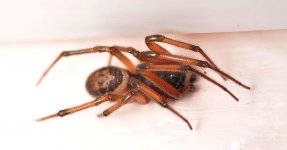I recently saw a fabulous macro image of an insect that apparently had been captured hand held. I asked how it was done and the op said that he swayed slightly to achieve this capturing approx 20 images to focus stack. Is this possible accepting that the overall size and proportions of the image will be changed? I don't understand but am intrigued.
Last edited:





